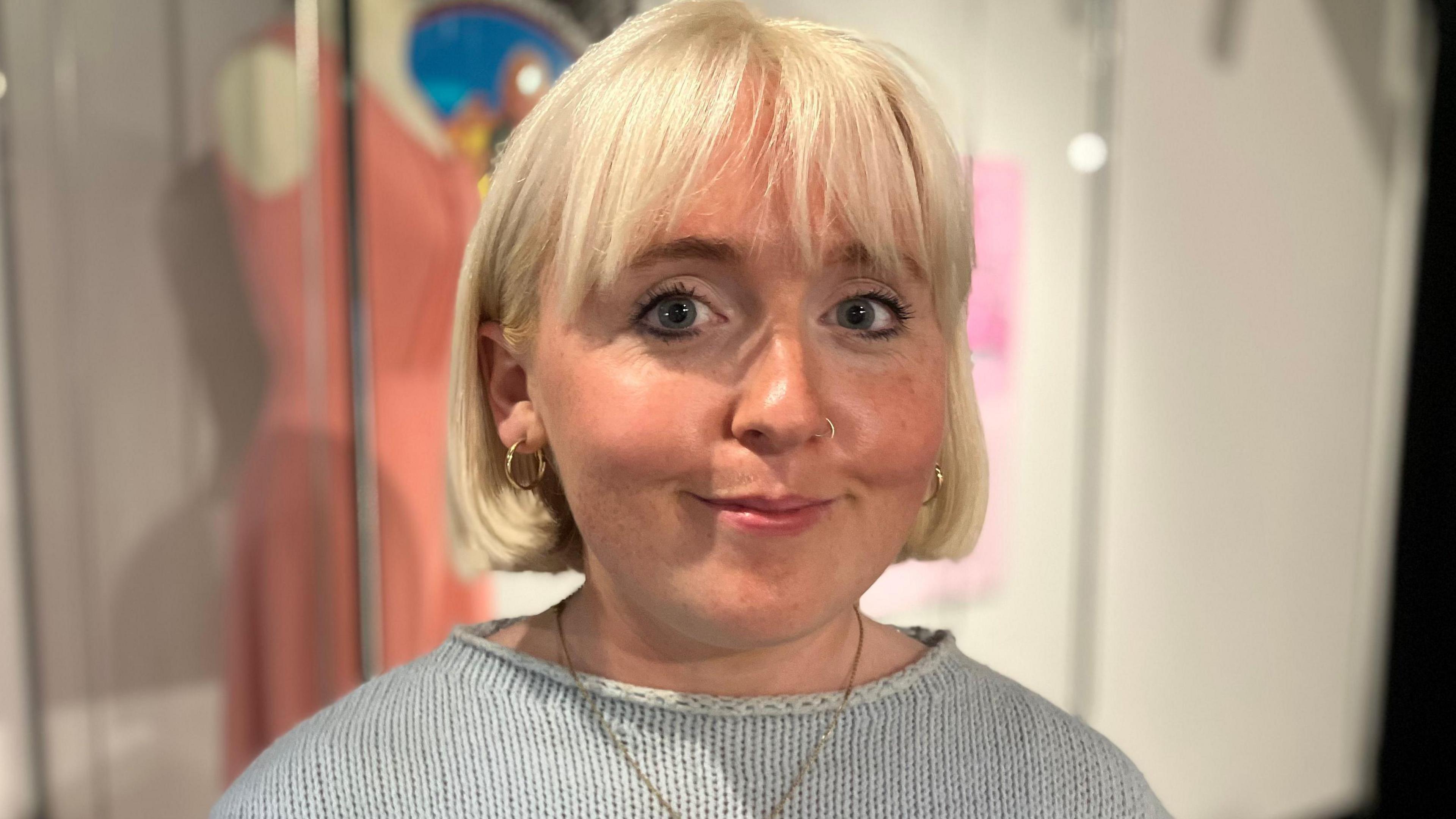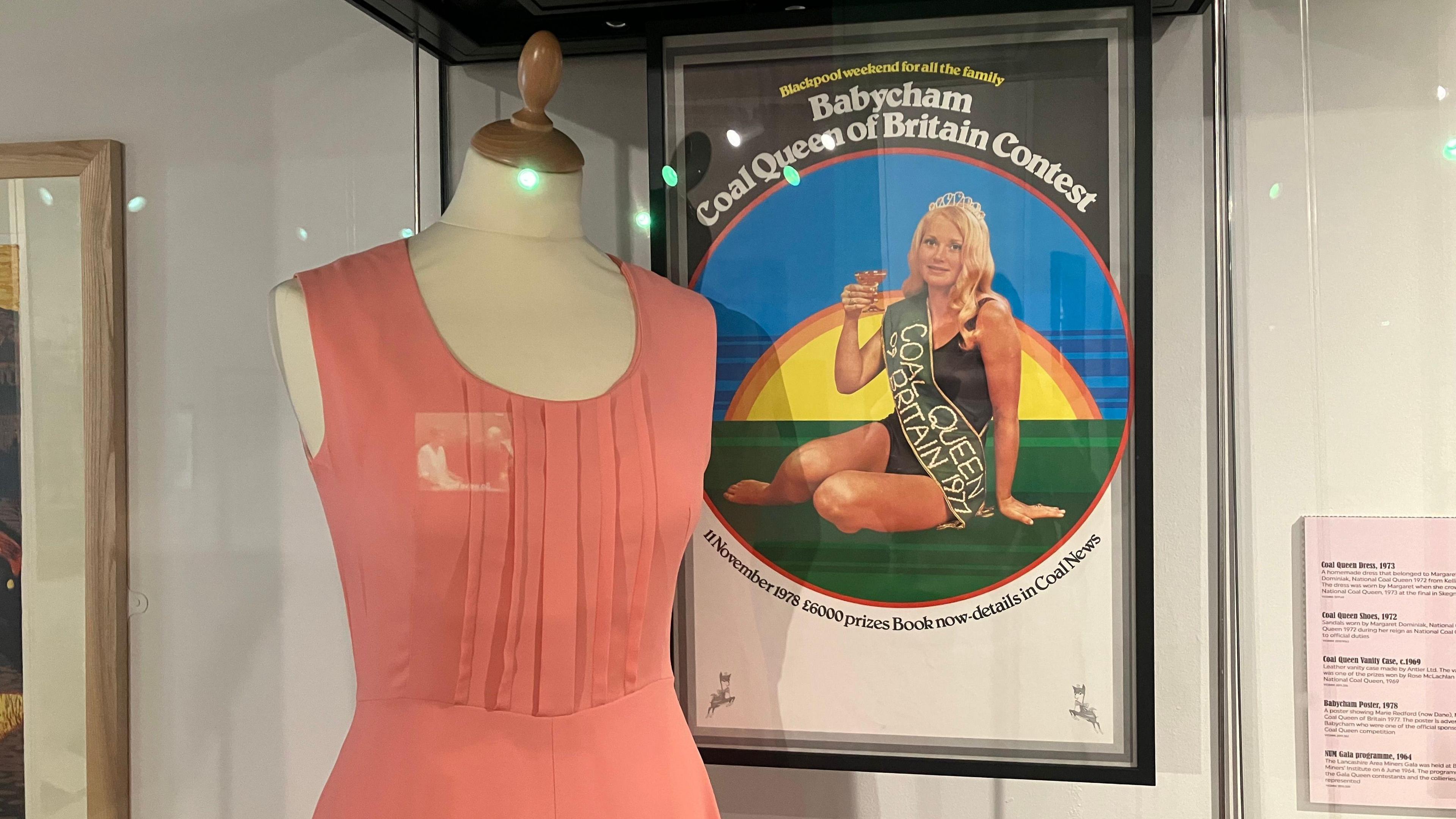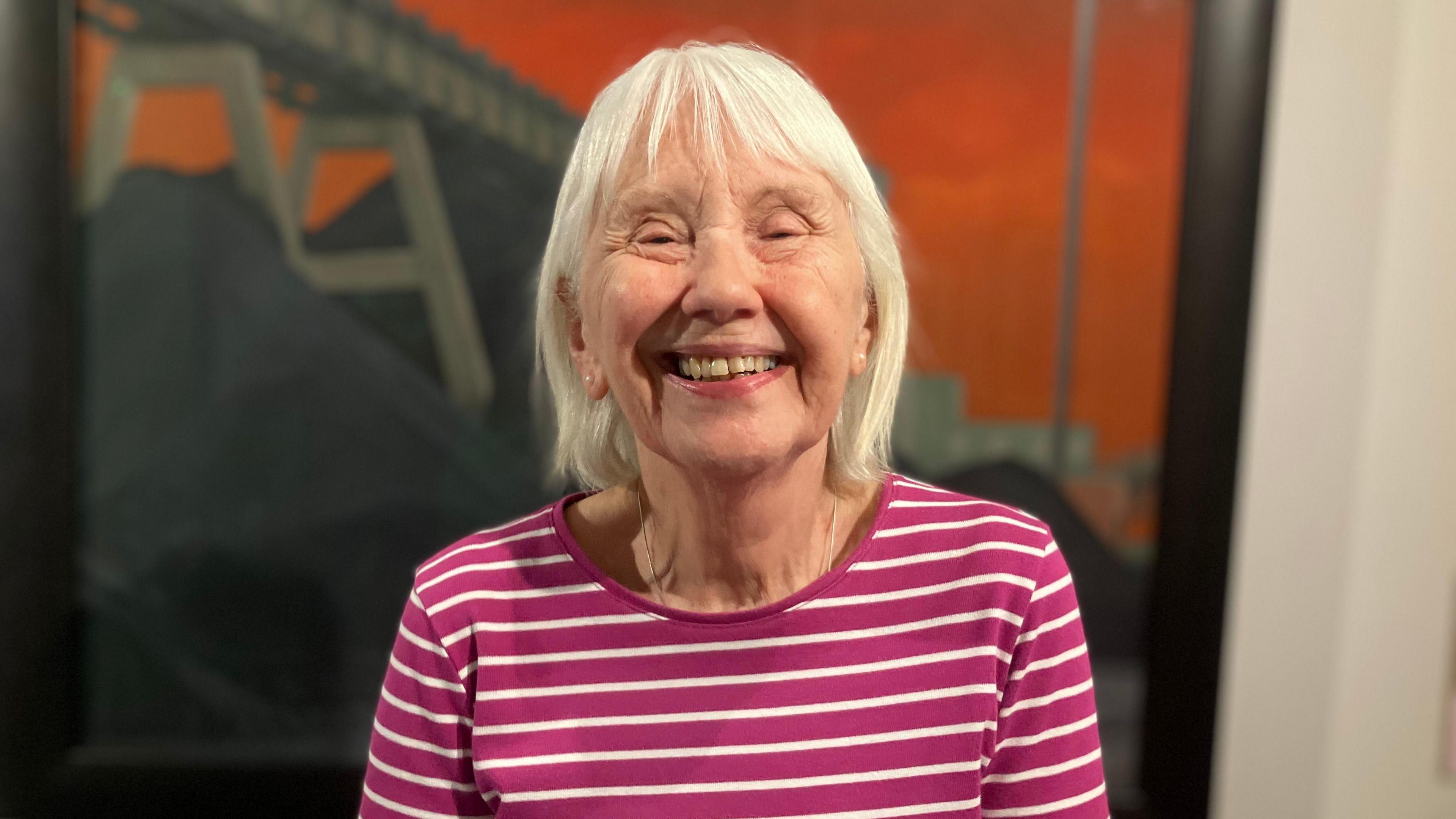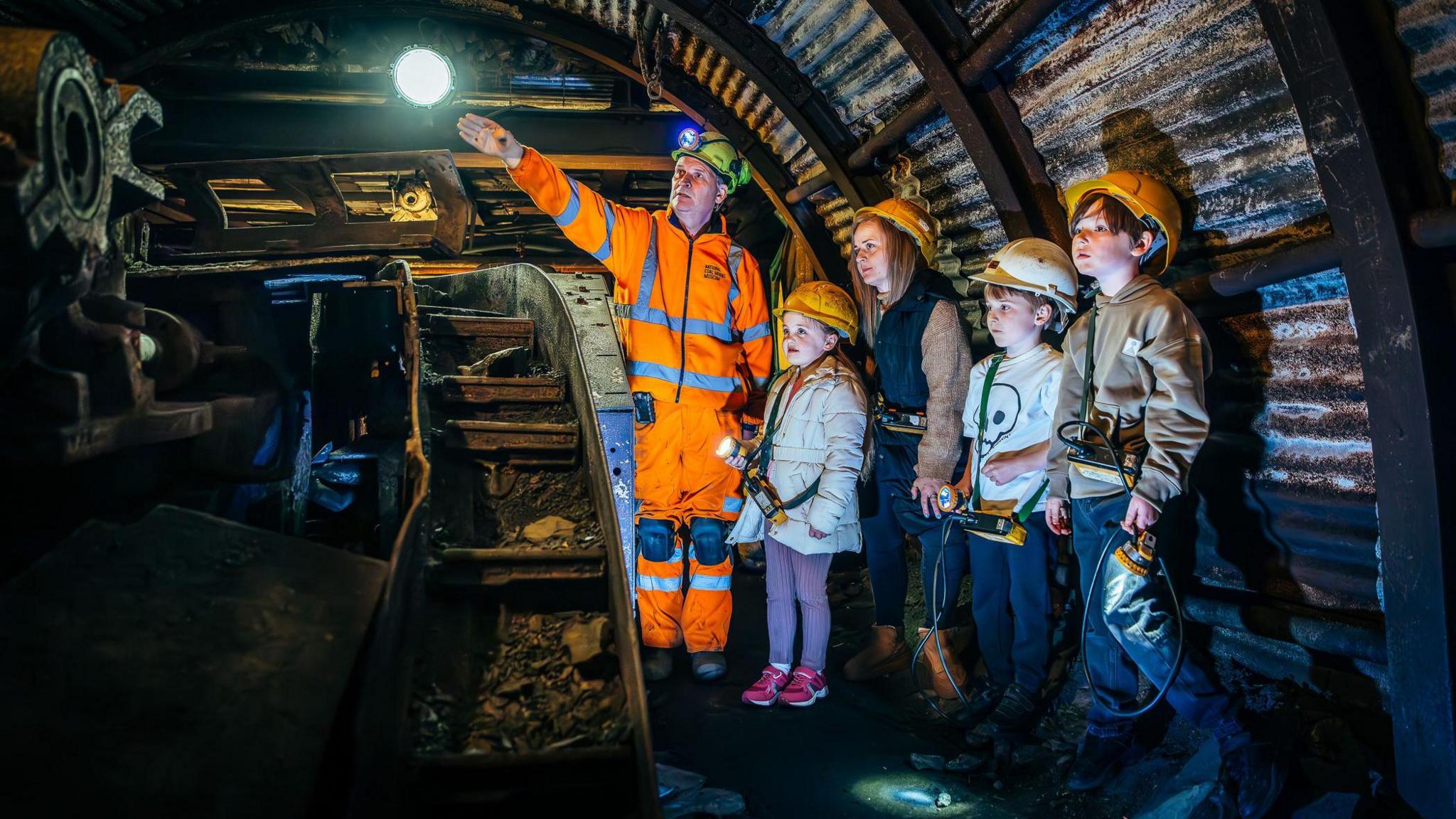Show honours women's roles in mining communities

Jennifer Jasmine White curated the exhibition, which aims to highlight working class women's stories
- Published
The experiences of women working and living in British mining communities will be explored as part of an exhibition.
The show, titled From the Earth Comes Light, at the National Coal Mining Museum in Wakefield, highlights women's contributions to the industry.
It features items including a pageant dress and heels worn by a "coal queen", artworks and illustrations by female artists from Coal Magazine.
Jennifer Jasmine White, guest curator of the exhibition, said she hoped it would encourage "people to look at mining history differently, and see that working class women have historically been really innovative and creative".
"Working class women's stories, unfortunately, are still maligned," Ms White said.
"They are never told from the perspective of working class women.
"We have centred on female artists in the exhibition, it is thinking about self-representation, how working class women think about themselves and their stories."

Coal Queens are among the women to be celebrated as part of the From the Earth Comes Light exhibition
The show tells the story of "coal queens" - women who were judged and crowned at regional galas and represented local collieries.
"On the one hand they were basically beauty pageants - women were elected, they looked very glamorous and beautiful," Ms White said.
"But these women had really interesting and important civic roles.
"They travelled, gave speeches and were given opportunities they would not have had access to otherwise. They had more freedom than we might have thought."
She said the women had "really wonderful stories with great visual and creative histories" that had not been shared with the next generation.
"We are trying to rectify that."

The exhibition highlights the contribution of artist Moira Stephenson
Also among the textiles, bronze sculptures, paintings and photographs that form the exhibition is the story of Moira Stephenson.
The Coal Magazine illustrator became a household name for miners during the 1950s - but little is known about her.
Alison Cooper, the National Coal Mining Museum's collections and engagement manager for exhibitions and digital has been trying to fill in the gaps in her history.
"Moira has been an enigma, from 1956 to 1964, she was the magazine's staff artist," she said.
"She would have been seen on a daily basis in the magazine depicting mining scenes and 1960s room sets."

Alison Cooper from the museum says the show features undiscovered female artists
Ms Cooper said that when the exhibition was first planned, "very little" was known about Moira.
However, a donation of six paintings enabled the team to "piece together Moira's life".
"To fill the gap has been amazing, the artists on display are really undiscovered until now.
"We often talk about the miners who had the really difficult job of going underground and producing the coal, but behind the men were these strong women.
"It is not all about men and machinery."

Janet Buckle became fascinated with the coal industry while living in a mining community
Paintings by Janet Buckle, who was born in Bradford and now lives in Tickhill, Doncaster, has also been included in the exhibition.
The artist said she became fascinated with the landscape of coal mines while living in a mining community.
"Patterns were created by diggers moving coal around. I did quite a lot of work from the roadside", she said.
"I wanted people to see the grandeur in these landscapes, the drama.
"I feel honoured to be included in the exhibition, I want people to be surprised that women are at the heart of it."
Ms White said women had "always been creative and this exhibition is about trying to showcase that".
"This is a whole history that is waiting to be told," she said.
Get in touch
Tell us which stories we should cover in Yorkshire
Listen to highlights from West Yorkshire on BBC Sounds, catch up with the latest episode of Look North.
- Published2 April

- Published2 February
